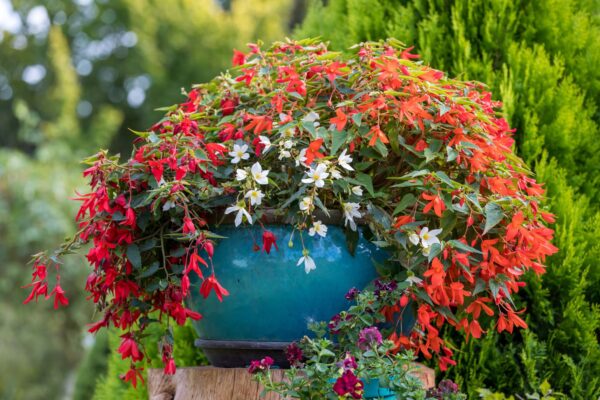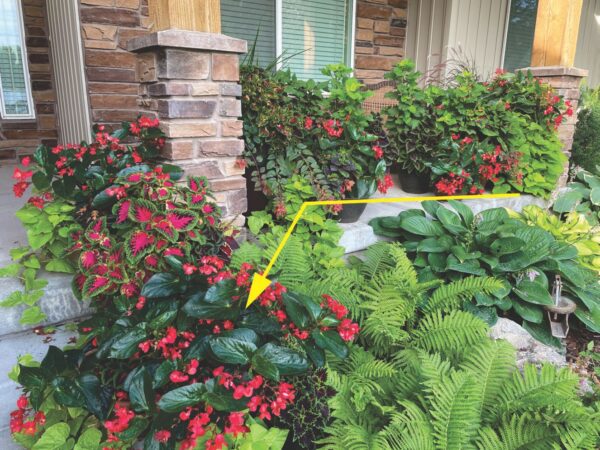Begonias- The King of Shade
Begonias- The King of Shade
We have tried many of the Annual Flowers shady areas. The ones that have done the best include impatiens, coleus, pansies, and salvia.
But for the shadiest areas the king of them all is the begonia.
There are many kinds of begonias. Begonias with lots of small flowers, begonias with huge double flowers, and begonias with no flowers at all. Some begonias have tiny leaves while others have leaves as big as your hand.
There are Begonias with colorful leaves that steal the show from the flowers it produces. Some begonias are perennials in very cold climates, while others survive only in a warm terrarium in your home. There are species that survive the desert and others that require a rainforest. Over 1500 species of begonias have been recorded.
Begonias come in a variety of types, each with unique characteristics. Here are some popular kinds of begonias:

Fibrous Begonias (Begonia semperflorens):
- Also known as wax begonias.
- They have smaller, more abundant flowers and are very resilient.
- Commonly used in bedding and borders, as well as in containers.
- They can tolerate more sun than other begonias.

Tuberous Begonias (Begonia tuberhybrida):
- Known for their large, showy flowers in a wide range of colors.
- Ideal for hanging baskets, containers, and shaded garden beds.
- They require well-drained soil and regular watering but avoid overwatering.
- Our favorite Tuberous Begonias are called “Non-Stop”. This of tuberous begonia produces a large, showy, double flowers from midsummer until the first frost of fall.

Trailing Begonias (Begonia boliviensis):
- These have a cascading growth habit, making them perfect for hanging baskets.
- They produce an abundance of bright, tubular flowers.
- They thrive in partial shade and need regular watering.
- Each type of begonia offers unique benefits and can add beauty and interest to your garden or home. Choosing the right type depends on your specific growing conditions and aesthetic preferences.

Rex Begonias (Begonia rex-cultorum):
- Grown primarily for their striking foliage.
- Leaves come in various colors, patterns, and textures, making them a great choice for indoor gardening.
- They need high humidity and indirect light.
- Rex begonias are planted for their fabulous foliage. Their flowers are rather insignificant, but with foliage like this, who cares? And because you don’t have to wait for them to bloom to enjoy their colors they will give you a show from the moment you plant them right on through until frost.

Cane Begonias (Begonia coccinea):
- Also known as Angel Wing begonias due to the shape of their leaves.
- They have tall stems and produce clusters of flowers.
- They thrive in containers and prefer bright, indirect light.
A couple of things we have learned the hard way:
Don’t over water. Soggy soil and wet leaves and stems can lead to disease and death in begonias. Also, be careful when feeding begonias. Because of their leaf structure fertilizer granules, it can remain on the leaves and then if you sprinkle with water (or Mother Nature does) and it may burn the leaves. So, your best choice is a water-soluble fertilizer.
Don’t let the exotic look of begonias scare you out of trying them. If you have shade, you need begonias. Once you try them, you will be hooked.


